“Were it not for shadows, there would be no beauty.”
I’ve spent the past few months writing about marginal spaces, bodies, and beings. More specifically, “shadow spaces and landscapes"—that which we cast into the margins. While doing research in the field, I had taken a picture of my shadow walking in the overhead scorching sun. A shadow—nothing much to think about. But shadows and shade began to intrigue me over my fieldwork. They became the temporary respite we sought most when engaging in conversation. There were days when my hosts and I bent our backs in the field to harvest beans and weed the farm, and the sun would hit us, casting a shadow over us. Changing and morphing dynamically to match our rhythmic movements. It was a somewhat musical observation: walking, talking, listening, and then noticing a casting upon the soil. Shadows became curious beings. I call them beings because, though they’re not “alive” as we imagine beings are, they are an outward projection of our own (bodily) existence, drawing us into a deeper awareness of our presence in a place, a time, or a moment. An extension of the relationality shared with the animate and inanimate.
Inspired, I structured one of my thesis chapters around shadow landscapes in the context of light (drought). The Swahili word for drought (that was used by many of my research participants) is “kiangazi” which stems from the root verb ‘angaza’, meaning ‘to cast light upon.’ The interplay between light and darkness, both literally and metaphorically, was for me a curious lens to explore drought interventions.
A series of questions then followed: What forms of existence continue to occur within “shadow landscapes” (belonging to societal margins)? What happens when light is cast onto such a land? What is made visible in what has always been invisible? And when this happens, do we then only focus on that which has been made visible rather than get curious about what more could still be invisible? Still silenced in a land desperately seeking quenching. And if we turn to that which some might consider as “the light” (for a shadow cannot exist without light), who continues to cast these shadows; and why? But most importantly, what can we learn from the shadowed landscapes when all we do is praise light for offering a temporary respite?
I love questions. For me, they are gateways into worlds of many possibilities, and in this somewhat unexpected quest to write about marginal and shadowed landscapes, I found myself subconsciously drawn to the daily encounters with them. Shadows of trees. Shadows of birds. Shadows of flowers. Shadows of buildings. Shadows in paintings and artwork. Shadows featured in children’s books.
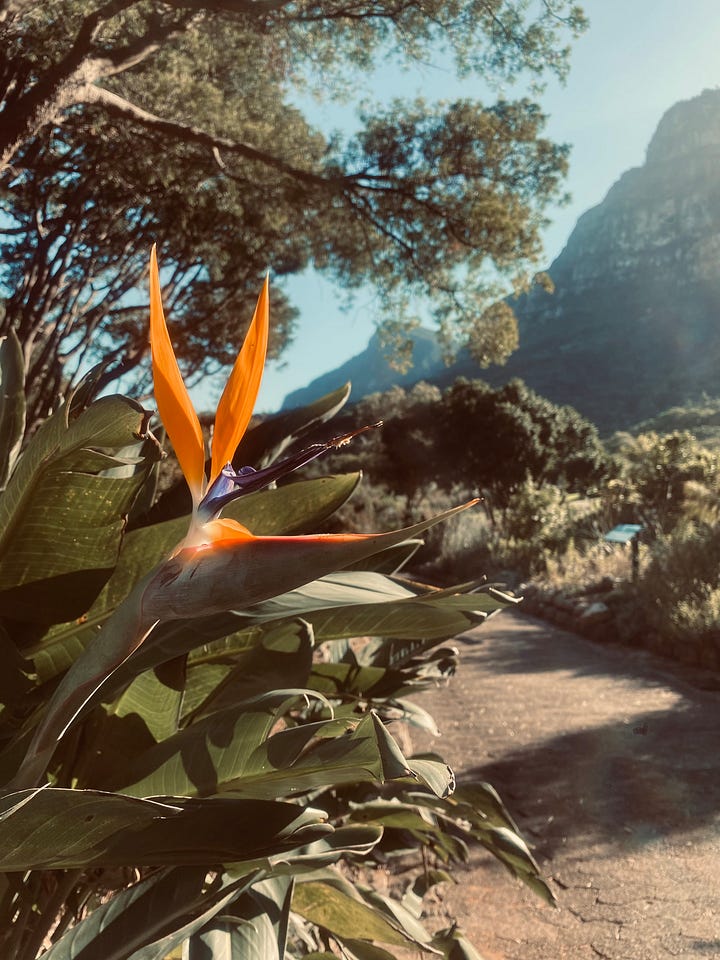
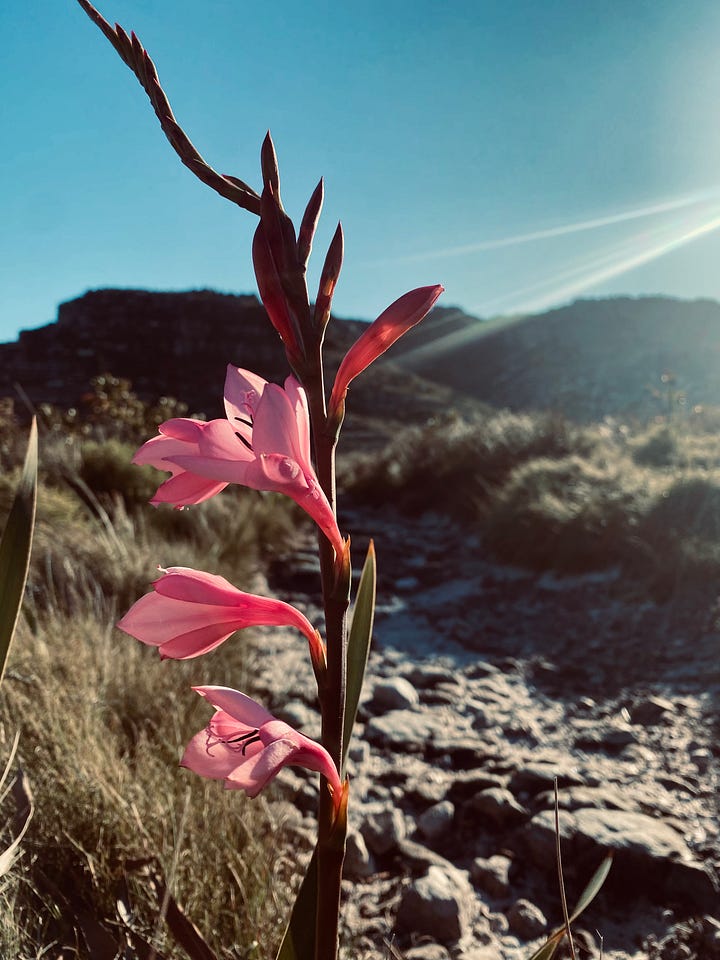
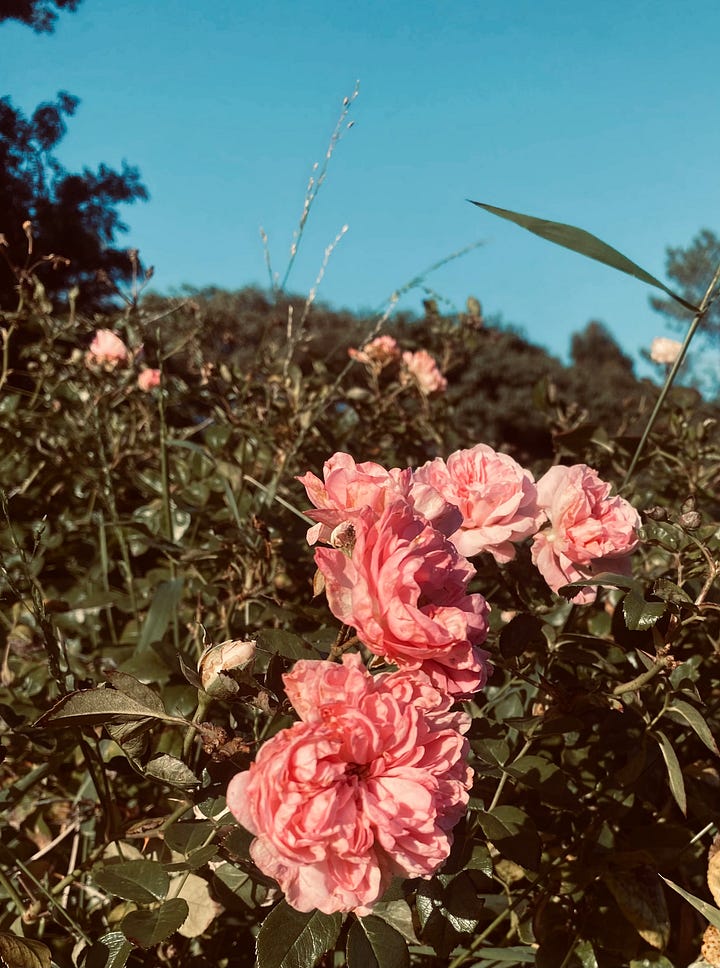
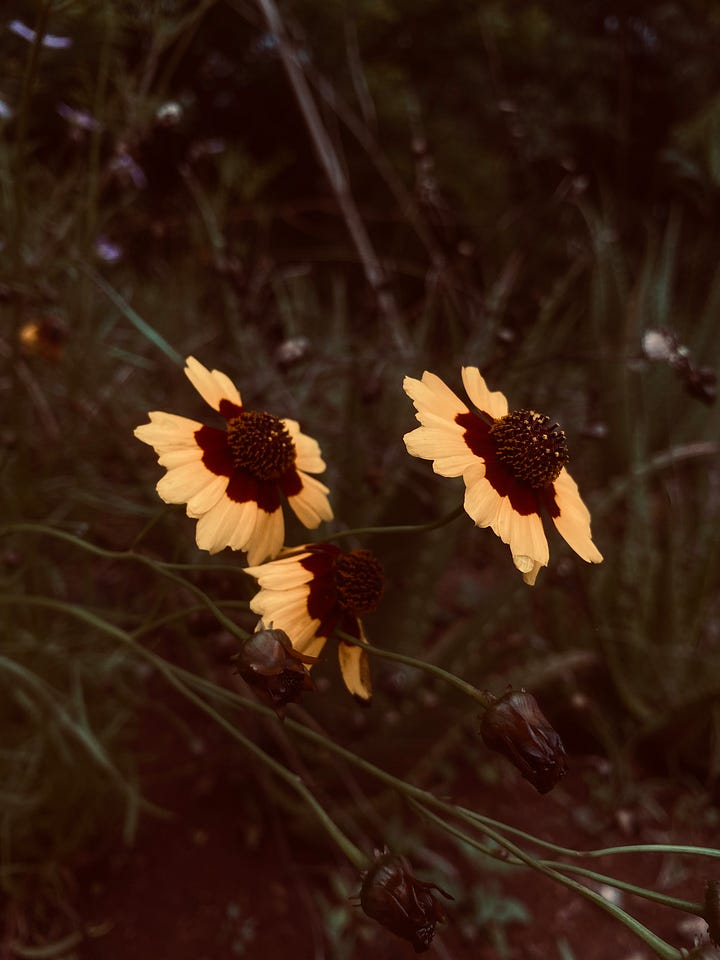
And then, turning inwards to the shadows present across our emotional landscapes. I was curious about what happens when we become aware of the internal shadows when we’re so used to their external forms.
Do we pay much attention to their presence and where they root themselves? (For a shadow can also not exist without the presence of an object, in/animate).
“We find beauty not in the thing itself but in the patterns of shadows, the light and the darkness, that one thing against another creates…Were it not for shadows, there would be no beauty.”
In Praise of Shadows, Junichiro Tanizaki.
I love the line: “Were it not for shadows, there would be no beauty.”
In remembering the morphing shapes of our shadows as we dug our hands into the soil, I started thinking about shadows as companions: never static but, in their fluidity, constantly projecting beauty. Who are we? What tethers us? How beautiful we are! And perhaps because of their constant presence around us, we fail to notice them. Or perhaps because of cultural and religious beliefs surrounding light (good) and shadow (bad), we rather keep our eyes focused on that which we consider the light. Yet the peripheral, which often dwells in the shadows, in the nukes of the margins, also tends to be filled with immense awe and wonder.
I’m wondering what would happen if we saw shadow as beauty?
What encounters would we stumble upon?
Where may shadow be craning our necks to (see)?
Beyond shadowy landscapes and existence/s, I’ve been reading, listening, and watching quite a lot this past month:
“What We Carry, A Memoir” by Maya Shanbang Lang. Honest, insightful, vulnerable, tender, but above all compassionate. So good was this book that I only managed to put it down at 1 am. “Maybe at our most maternal, we aren’t mothers at all. We’re daughters, reaching back in time for the mothers we wish we’d had and then finding ourselves.” If you pick this up, also read Buchi Emecheta’s “The Joys of Motherhood” and Mariama’s Ba’ “Une Longue Si Lettre.”
I finished Khaled Hosseini’s “A Thousand Splendid Suns” which I’d started in June. Oh my, what a book! There’s a good reason why so many people recommend it. It is a heartbreaking tale of what it means to exist as a shadowed body in shadowed landscapes. “You see, some things I can teach you. Some you learn from books. But there are things that, well, you have to see and feel.”
“The Clan of One-Breasted Women” by Terry Tempest Williams. It’s a short read that you can easily finish in less than two hours. She reflects on her family’s cancer history in connection with the nuclear testing that took place in Nevada State, USA, in the 1950s. I found it a moving chronicle that sheds light on the forms of violence relegated to “shadow bodies” and ancestral lands, and a wider conversation on environmental issues we rarely speak of.
Dan Brown’s “Inferno” was never on my list. If anything, the Da Vinci Code was to come first. But while getting my hair done recently, I picked it up from my loctician’s desk. I read the entire book that day! And if I’m being honest, I wouldn’t recommend it. It felt like driving on a road with many bumps and curves only to end up back to the same curves and bumps.
I started “The Colour Purple,” by Alice Walker having first watched the movie a few years ago. It’s a heavy read and you’ll need both patience and a strong will to move through the heavy topics it tackles. I’m still working through it…
I returned to another book I first read last year: “The Enneagram of Discernment: The Way of Vocation, Wisdom, and Practice” by Drew Moser. I picked this book up particularly because I’ve been thinking a lot recently about the “what” that is often tied to the shifting “how” of vocation/purpose (maybe I’ll unpack this more in another post). Although I could’ve skipped to the chapter centering my enneagram number (7), I instead found myself reading the entire book and concentrating more on the other dominant numbers that I’ve found resonate deeply: 4, 5, and 8, respectively. If you’re curious about the enneagram and wanna dig a little deeper (through a lens of theology, spirituality, neuroscience, and psychology), this is it!
Currently, I’m reading “A Line in the River: Khartoum, City of Memory” by Jamal Mahjoub. It’s been reminding me of an article I read recently about what it means to “remember well” when the memories we hold take on new forms over time. Remembrance is, after all, a form of prayer, and this book feels like prayer. A conversation, I dare say, with himself, his people, his past and present, and a complex land shaped by a complex history.
Watch & Listen:
Watch: Sambizanga. Shot in 1973 in colonial Angola, Sambizanga centers ‘Maria’ as she tracks down her husband who has been captured by the governing Portuguese officials. It’s a moving tale that brings to light the struggle for freedom for the lusophone country; and does so by spotlighting the crucial role of women during this struggle.
Watch: The Bear was recommended a few weeks back by a couple of people so I decided to check it out. The cinematography, the plot, the food - magnificent! Nothing else to say but, “hands!”
Listen: Guardians of the River. A wonderful podcast series that tracks a group of scientists following the Okavango Water System from Botswana into Angola on mokoro ‘boats.’ I loved how it wasn’t just about the journey of these “guardians” themselves, but about the landscapes they meet and the people who have occupied them. They made sure to ask the often ignored but necessary questions in the world of conservation. What does conservation/protection really mean and who are we conserving/protecting it for and from? For any environment/wildlife enthusiasts - or anyone curious about conservation - check it out!
That’s it for now. I’ll see you next time.


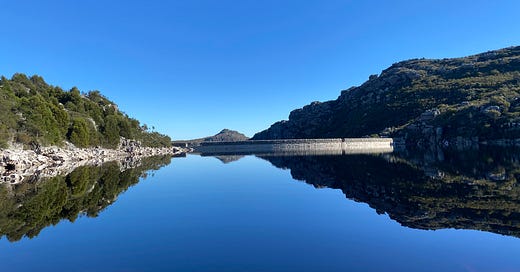


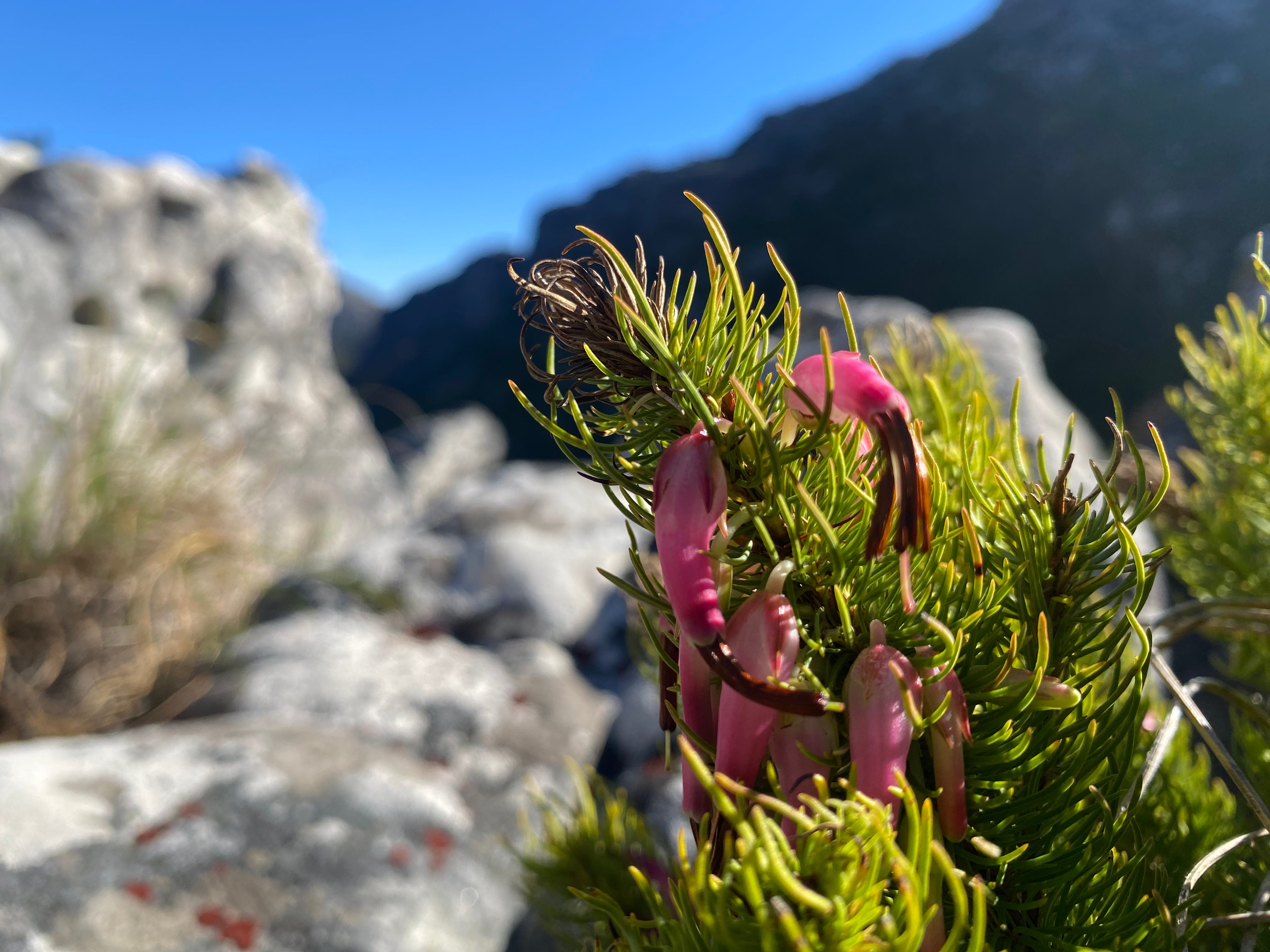

Great piece Lizzy!